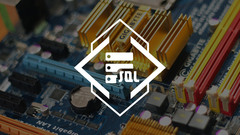SQL Bootcamp
This section of the course walks through the various relational databases on the market, along with how to configure your system to manage a database.
- Define what a database is and how they are used in software applications.
- Explain what data types are in a database.
- Demonstrate how to build a database schema.
This section of the course examines the key building blocks of a SQL application, which is: how to add new records, query a data set, edit records, and deleting elements.
- Demonstrate how to perform CRUD actions in a SQL database.
- Define how to filter database queries based on search terms.
- Design a SQL seed script for populating a database.
In this set of guides you'll learn how to work with advanced SQL queries, including: pattern matched searching, ranges, set logic, and subqueries.
- Demonstrate how to build and run SQL subqueries.
- List the requirements for running wildcard SQL queries.
- Create collection based queries.
- Define what a SQL function is.
- Explain how aggregate functions work in SQL queries.
- Demonstrate how to call SQL functions from within a query.
This section explains how to implement control flow into SQL scripts. This will allow you to query data and have the results pass through if/else based conditional logic.
- Explain what control flow is in a database query.
- Demonstrate how to build a query that implements conditional logic.
- Create queries that implement aliases to customize column names.
- Describe the process for exporting SQL query data to the CSV format.
One of the key benefits to using a SQL database is that its relational in nature. This means that tables can map to other tables and return relational based result sets.
- Explain what a database relationship is and the requirements for configuring tables to work with references.
- Define a foreign key column in a database table.
- Demonstrate how to perform queries that join multiple tables together.
- Describe the differences between inner and outer join queries.
This section of the course focuses on a number of advanced SQL features and techniques, including: working with indexes, database normalization, and modeling.
- Explain the purpose of a database index.
- Demonstrate how to implement database normalization.
- Describe how to uses diagrams to model a database schema.
